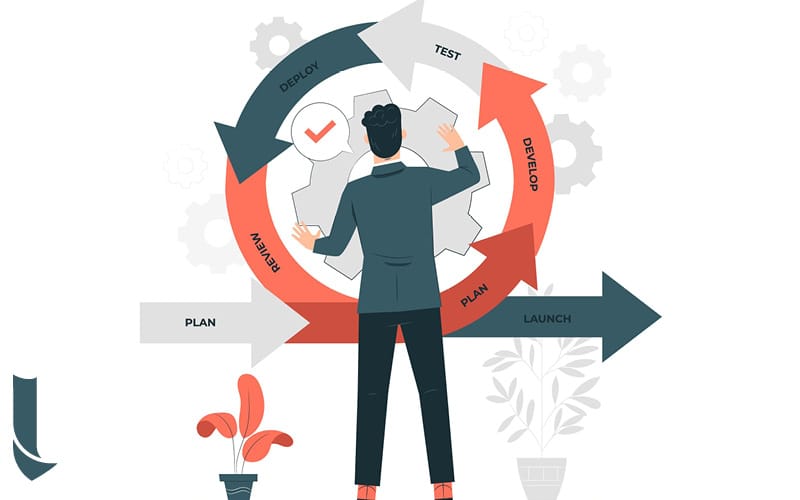From Project Manager to Agile Leader: A Transformation in Mindset and Skills

The role of the project manager has long been associated with strict control over timelines, resources, and deliverables in a predictive and hierarchical model. However, with the rise of agile methodologies, a new leadership model has emerged: the agile leader.
This role goes beyond traditional project management. It embraces a facilitative, inspiring, and adaptive approach—empowering team autonomy and enabling continuous value delivery.
What are the key skills to develop for this transformation? Let’s explore this through a comparative portrait and a breakdown of essential competencies.
Project Manager vs. Agile Leader
This comparison highlights a shift in posture: from control to trust, from rigid planning to adaptability, and from a hierarchical role to one that catalyzes collective intelligence.
|
Project Manager |
Agile Leader |
|
Controls and plans in detail |
Facilitates and adapts |
|
Focuses on deadlines and scope |
Focuses on value and outcomes |
|
Hierarchical authority |
Shared leadership and empowerment |
|
Risk manager |
Coach and change agent |
|
Top-down communication |
Transparent and two-way dialogue |
Key Skills to Develop
Technical Skills: Mastering the Agile Environment
While agile leadership focuses on people, it still requires a solid grasp of key technical aspects:
- Understanding Agile Frameworks (Scrum, Kanban, SAFe, LeSS…)Example: A former waterfall project manager must learn to lead incrementally with sprints and frequent deliveries.
- Mastery of Agile Tools (Jira, Trello, Monday.com, Miro…)Example: Instead of using static Gantt charts, an agile leader promotes a dynamic backlog to prioritize work based on business value.
- Grasping Agile Metrics (velocity, lead time, cycle time, burn-down charts…)Example: Success is no longer defined by schedule adherence but by the team’s ability to deliver high-value features.
- Product and Customer Focus: Understanding needs, gathering frequent feedback, and adjusting the roadmap.Example: An agile leader doesn’t just execute projects; they challenge priorities with the Product Owner to ensure real user impact.
Human Skills: The Real Power of Agile Leadership
The shift from project manager to agile leader is primarily about mindset and posture. Key human-centered skills include:
1. Creating a Culture of Trust and Autonomy
An agile leader doesn’t micromanage but enables the team to make decisions and take ownership.
Situation: A development team hesitates to make a technical decision. Instead of imposing a solution, the agile leader asks open-ended questions and helps the team find the best path forward.
How to develop this skill:
• Learn to let go and delegate.
• Set clear guidelines while allowing freedom in execution.
2. Acting as a Facilitator and Coach
Rather than issuing directives, the agile leader supports the team in problem-solving.
Situation: A Scrum Master notices a team member struggling to speak up in meetings. Instead of giving orders, the leader encourages them and adapts rituals to foster psychological safety.
How to develop this skill:
• Use coaching techniques like active listening and open questioning.
• Lead collaborative workshops to spark collective intelligence.
3. Managing Change and Resistance
Any agile transition brings resistance. A strong agile leader handles these tensions and gets buy-in through involvement.
Situation: A manager refuses to adopt Scrum out of fear of losing control. Instead of forcing change, the agile leader engages them in a pilot and demonstrates tangible results.
How to develop this skill:
• Build emotional intelligence to understand fears and blockers.
• Communicate with empathy and highlight the benefits of change.
4. Fostering a Feedback and Continuous Improvement Culture
An agile leader pushes the team to reflect regularly and improve.
Situation: After a tough sprint, instead of blaming the team for delays, the leader hosts a constructive retrospective to identify improvement areas.
How to develop this skill:
• Practice regular, constructive feedback.
• Lead engaging retrospectives to encourage learning and evolution.
3. How to Successfully Transition to Agile Leadership
Here’s a 3-step approach to evolve from a traditional project manager to an agile leader:
1-Learn and Adopt a New Posture:
• Read agile leadership literature (e.g. “Leadership Agile” by Jean-Claude Grosjean).
• Take Scrum Master or Product Owner training.
• Observe experienced agile leaders in action and learn from their methods.
2. Experiment and Adjust Your Ways of Working:
• Start applying agile practices (daily stand-ups, sprints, feedback sessions…).
• Test a coaching and facilitation approach with your team.
3. Seek Feedback and Continuously Improve:
• Regularly ask your team for feedback on your leadership.
• Adapt based on insights and lessons learned.
Conclusion
Transitioning from traditional project manager to agile leader is a deep transformation that requires self-reflection, continuous learning, and skill adaptation.
Where the project manager was a planner and risk controller, the agile leader becomes a facilitator, an enabler, and a driver of collective performance.
By developing these new competencies, project managers can not only embrace agility but also build more autonomous, engaged, and high-performing teams.
